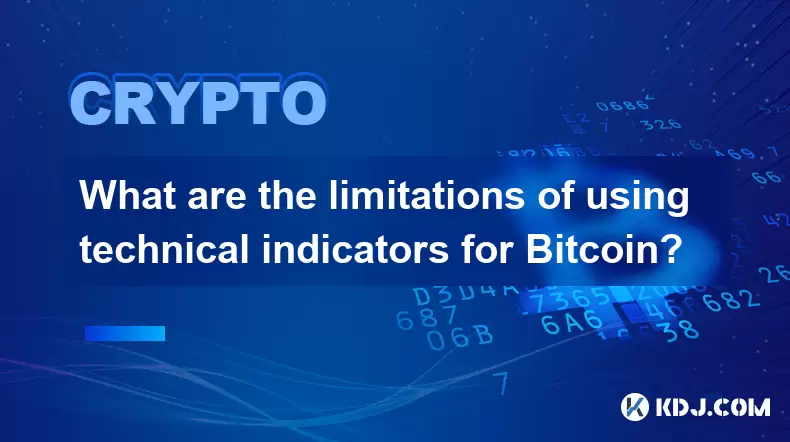-
 Bitcoin
Bitcoin $108,250.0992
0.11% -
 Ethereum
Ethereum $2,515.9404
0.03% -
 Tether USDt
Tether USDt $1.0003
0.00% -
 XRP
XRP $2.2166
-0.19% -
 BNB
BNB $656.5904
0.29% -
 Solana
Solana $147.4122
-0.58% -
 USDC
USDC $1.0000
-0.01% -
 TRON
TRON $0.2830
0.06% -
 Dogecoin
Dogecoin $0.1641
0.27% -
 Cardano
Cardano $0.5739
-0.19% -
 Hyperliquid
Hyperliquid $39.1463
-0.11% -
 Sui
Sui $2.8882
-0.02% -
 Bitcoin Cash
Bitcoin Cash $487.6428
0.31% -
 Chainlink
Chainlink $13.2097
0.07% -
 UNUS SED LEO
UNUS SED LEO $9.0308
0.10% -
 Avalanche
Avalanche $17.8608
0.13% -
 Stellar
Stellar $0.2379
-0.06% -
 Toncoin
Toncoin $2.7400
-0.39% -
 Shiba Inu
Shiba Inu $0.0...01144
-0.36% -
 Litecoin
Litecoin $87.5467
0.66% -
 Hedera
Hedera $0.1538
0.22% -
 Monero
Monero $315.5479
0.36% -
 Dai
Dai $1.0000
0.00% -
 Polkadot
Polkadot $3.3523
-0.71% -
 Ethena USDe
Ethena USDe $1.0003
0.01% -
 Bitget Token
Bitget Token $4.3960
-1.03% -
 Uniswap
Uniswap $7.2663
4.19% -
 Aave
Aave $272.8619
2.04% -
 Pepe
Pepe $0.0...09676
-0.18% -
 Pi
Pi $0.4586
-2.87%
How are Bitcoin transactions recorded? Where is the transaction data stored?
Bitcoin transactions are verified by nodes, grouped into blocks, and added to the blockchain through mining, ensuring transparency and security.
Apr 27, 2025 at 02:29 pm

Bitcoin transactions are recorded through a decentralized system that relies on blockchain technology. This process ensures transparency and security, making it an essential aspect of the cryptocurrency's operation. To understand how Bitcoin transactions are recorded and where the transaction data is stored, it's important to delve into the mechanics of the blockchain and the roles of various participants in the network.
The Basics of Bitcoin Transactions
Bitcoin transactions are initiated when a user sends a certain amount of Bitcoin to another user's wallet address. This transaction is not immediately processed but is broadcast to the Bitcoin network. The network consists of nodes, which are computers running the Bitcoin software. These nodes verify the transaction to ensure it is valid—checking factors such as whether the sender has the required amount of Bitcoin and if the transaction is correctly formatted.
The Role of the Blockchain
Once a transaction is verified by the nodes, it is grouped with other transactions into a block. The blockchain is essentially a chain of these blocks, each containing a record of multiple transactions. The blockchain serves as a public ledger, where all Bitcoin transactions are recorded in chronological order. This ledger is distributed across the entire network, ensuring that no single entity controls the data.
Mining and Block Creation
The process of adding a new block to the blockchain is known as mining. Miners use powerful computers to solve complex mathematical problems, a process that requires significant computational power. When a miner successfully solves the problem, they are allowed to add a new block to the blockchain. This new block includes the transactions that have been verified and are waiting to be recorded. As a reward for their efforts, miners receive newly minted Bitcoins and transaction fees.
Transaction Data Storage
Transaction data is stored within the blocks of the blockchain. Each block contains a header and a list of transactions. The header includes metadata such as the block number, timestamp, and a reference to the previous block's hash. The list of transactions is where the actual transaction data is stored, including details such as the sender's and recipient's addresses, the amount of Bitcoin transferred, and a unique transaction ID.
Security and Immutability
The security of Bitcoin transactions is maintained through the use of cryptographic hashes. Each block's header contains a hash of the previous block, creating a chain of blocks that is extremely difficult to alter. If someone were to attempt to change a transaction in a previous block, they would need to recalculate the hashes for all subsequent blocks, which is practically impossible due to the computational power required. This ensures the immutability of the blockchain, meaning once a transaction is recorded, it cannot be altered.
Verification and Consensus
The Bitcoin network operates on a consensus mechanism known as Proof of Work (PoW). This mechanism ensures that all participants in the network agree on the state of the blockchain. When a new block is added, nodes on the network verify the block and the transactions within it. If the majority of nodes agree that the block is valid, it is added to the blockchain. This consensus process helps prevent fraudulent transactions and maintains the integrity of the network.
Accessing Transaction Data
Anyone can access the Bitcoin transaction data through various blockchain explorers. These are online tools that allow users to view the details of any transaction recorded on the blockchain. By entering a transaction ID or a wallet address, users can see the transaction history, including the amount transferred, the time of the transaction, and the block in which it was recorded. This transparency is one of the key features of the Bitcoin network.
The Role of Nodes in Data Storage
Nodes play a crucial role in storing and maintaining the blockchain. Each node keeps a copy of the entire blockchain, ensuring that the data is decentralized and not controlled by a single entity. When a new block is added to the blockchain, nodes update their copies to reflect the new state of the ledger. This distributed nature of data storage enhances the security and resilience of the Bitcoin network.
Transaction Fees and Prioritization
Transaction fees are an important aspect of Bitcoin transactions. When a user initiates a transaction, they can specify a fee, which is paid to the miner who includes the transaction in a block. Higher fees incentivize miners to prioritize the transaction, leading to faster confirmation times. The fee structure helps manage the load on the network and ensures that transactions are processed efficiently.
The Importance of Wallets
Bitcoin wallets are essential for managing and storing Bitcoin. Wallets contain the private keys required to authorize transactions and access the funds stored in the associated addresses. When a transaction is initiated, the wallet software signs the transaction with the sender's private key, ensuring that only the rightful owner can spend the Bitcoin. Wallets also allow users to view their transaction history and monitor their balance.
FAQs
Q: Can Bitcoin transactions be reversed?
A: No, Bitcoin transactions cannot be reversed once they are confirmed on the blockchain. The immutability of the blockchain ensures that once a transaction is recorded, it cannot be altered or undone.
Q: How long does it take for a Bitcoin transaction to be confirmed?
A: The confirmation time for a Bitcoin transaction can vary, typically taking anywhere from 10 minutes to an hour. The speed of confirmation depends on factors such as the transaction fee and the current load on the network.
Q: Is it possible to track Bitcoin transactions?
A: Yes, Bitcoin transactions are public and can be tracked using blockchain explorers. By entering a transaction ID or wallet address, anyone can view the details of a transaction, including the amount transferred and the parties involved.
Q: What happens if two miners solve the mathematical problem at the same time?
A: In the event that two miners solve the problem simultaneously and add different blocks to the blockchain, a temporary fork occurs. The network resolves this by continuing to build on the longest chain of blocks. The shorter chain is eventually abandoned, and the transactions in the abandoned block are re-added to the pool of unconfirmed transactions.
Disclaimer:info@kdj.com
The information provided is not trading advice. kdj.com does not assume any responsibility for any investments made based on the information provided in this article. Cryptocurrencies are highly volatile and it is highly recommended that you invest with caution after thorough research!
If you believe that the content used on this website infringes your copyright, please contact us immediately (info@kdj.com) and we will delete it promptly.
- Litecoin Breakout Watch: What Traders Need to Know Now
- 2025-07-06 16:50:13
- Bitcoin, Solana, Ethereum: Decoding the Latest Buzz on the Blockchain
- 2025-07-06 16:50:13
- Widnes Resident's 50p Could Be Your Ticket to Easy Street: Rare Coin Mania!
- 2025-07-06 16:55:13
- Bitcoin, Solaris Presale, and Token Rewards: What's the Buzz?
- 2025-07-06 16:55:13
- Ethereum Under Pressure: Price Drop Amid Global Uncertainties
- 2025-07-06 17:00:13
- XRP, SEC Case, and Prosperity: A New Era for XRP Holders?
- 2025-07-06 17:10:13
Related knowledge

What is the Woodies CCI indicator and can it be used for Bitcoin?
Jul 04,2025 at 05:14pm
Understanding the Woodies CCI IndicatorThe Woodies CCI indicator is a variation of the traditional Commodity Channel Index (CCI), which was originally developed by Donald Lambert. The standard CCI measures the current price level relative to an average price over a given period, typically 14. However, the Woodies version modifies this calculation to mak...

How to use indicators to trade the opening range breakout for Bitcoin CME futures?
Jul 05,2025 at 07:35pm
What Is the Opening Range Breakout Strategy?The opening range breakout (ORB) strategy is a popular trading technique used in both traditional markets and cryptocurrency futures, particularly for Bitcoin on the CME. This method involves identifying a specific price range formed during the early phase of a trading session and then taking positions when th...

What does a bearish cross on the Stochastic RSI mean for Bitcoin?
Jul 05,2025 at 07:18pm
Understanding the Stochastic RSI IndicatorThe Stochastic RSI (Relative Strength Index) is a momentum oscillator used in technical analysis to identify overbought or oversold conditions in an asset's price. It combines two well-known indicators — the RSI and the Stochastic Oscillator — to provide more nuanced signals than either could alone. The Stochast...

What are the limitations of using technical indicators for Bitcoin?
Jul 06,2025 at 03:35am
Understanding the Role of Technical Indicators in Cryptocurrency TradingIn the realm of Bitcoin trading, technical indicators are tools used by traders to analyze historical price data and volume to predict future price movements. These indicators—such as Moving Averages, Relative Strength Index (RSI), and MACD—are widely adopted across traditional fina...

How to use the historical volatility indicator for Bitcoin options trading?
Jul 06,2025 at 04:14am
Understanding the Historical Volatility IndicatorThe historical volatility indicator (HV) is a statistical measure used to assess the price fluctuations of an asset over a specific time period. In the context of Bitcoin options trading, this metric helps traders evaluate past price movements to anticipate potential future swings. Unlike implied volatili...

Best indicator for confirming chart patterns like head and shoulders on Bitcoin
Jul 06,2025 at 01:07pm
Understanding Chart Patterns in Cryptocurrency TradingIn the volatile world of Bitcoin trading, chart patterns serve as critical tools for identifying potential price movements. Among these, the head and shoulders pattern is one of the most reliable reversal indicators. Recognizing this formation requires not only visual identification but also confirma...

What is the Woodies CCI indicator and can it be used for Bitcoin?
Jul 04,2025 at 05:14pm
Understanding the Woodies CCI IndicatorThe Woodies CCI indicator is a variation of the traditional Commodity Channel Index (CCI), which was originally developed by Donald Lambert. The standard CCI measures the current price level relative to an average price over a given period, typically 14. However, the Woodies version modifies this calculation to mak...

How to use indicators to trade the opening range breakout for Bitcoin CME futures?
Jul 05,2025 at 07:35pm
What Is the Opening Range Breakout Strategy?The opening range breakout (ORB) strategy is a popular trading technique used in both traditional markets and cryptocurrency futures, particularly for Bitcoin on the CME. This method involves identifying a specific price range formed during the early phase of a trading session and then taking positions when th...

What does a bearish cross on the Stochastic RSI mean for Bitcoin?
Jul 05,2025 at 07:18pm
Understanding the Stochastic RSI IndicatorThe Stochastic RSI (Relative Strength Index) is a momentum oscillator used in technical analysis to identify overbought or oversold conditions in an asset's price. It combines two well-known indicators — the RSI and the Stochastic Oscillator — to provide more nuanced signals than either could alone. The Stochast...

What are the limitations of using technical indicators for Bitcoin?
Jul 06,2025 at 03:35am
Understanding the Role of Technical Indicators in Cryptocurrency TradingIn the realm of Bitcoin trading, technical indicators are tools used by traders to analyze historical price data and volume to predict future price movements. These indicators—such as Moving Averages, Relative Strength Index (RSI), and MACD—are widely adopted across traditional fina...

How to use the historical volatility indicator for Bitcoin options trading?
Jul 06,2025 at 04:14am
Understanding the Historical Volatility IndicatorThe historical volatility indicator (HV) is a statistical measure used to assess the price fluctuations of an asset over a specific time period. In the context of Bitcoin options trading, this metric helps traders evaluate past price movements to anticipate potential future swings. Unlike implied volatili...

Best indicator for confirming chart patterns like head and shoulders on Bitcoin
Jul 06,2025 at 01:07pm
Understanding Chart Patterns in Cryptocurrency TradingIn the volatile world of Bitcoin trading, chart patterns serve as critical tools for identifying potential price movements. Among these, the head and shoulders pattern is one of the most reliable reversal indicators. Recognizing this formation requires not only visual identification but also confirma...
See all articles

























































































